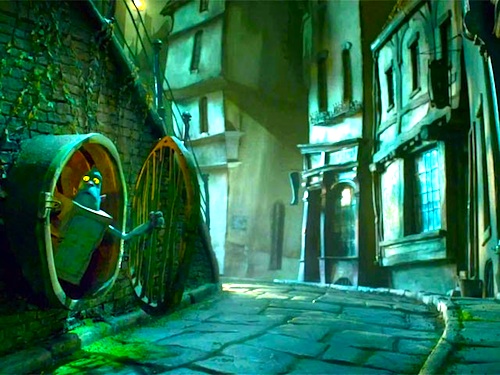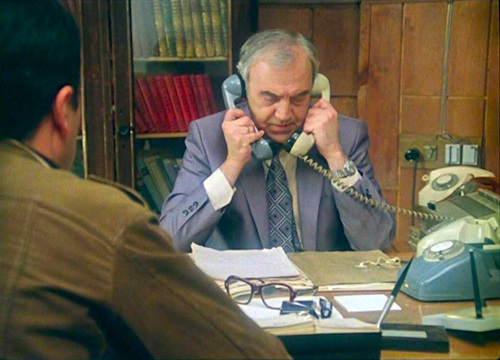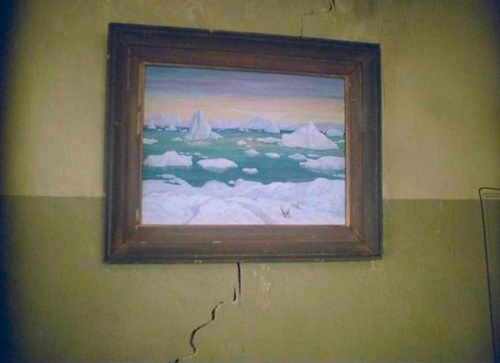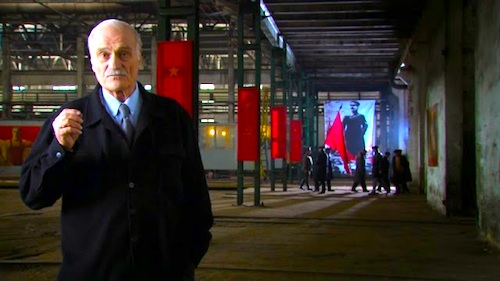By Joe Bendel. She is not one of those sugar-and-spice girls. In fact, she is a rather pushy kid. She might even be more than that, but it is hard to tell for sure during the course of Esther Hegarty’s short film adaption of Truman Capote’s story Miriam, which screened during the 2014 San Diego Film Festival.
Miriam Miller is rather taken aback when a precocious young girl approaches her in a cinema. It seems the deceptively innocent lass claimed the widowed Miller as an adult companion to gain entry to the film. They also happen to be namesakes—a fact that little interests the younger Miriam. The elderly woman probably would have forgotten the encounter had the girl not turned up at her flat later that evening. Miller is justifiably put off by Miriam’s unexpected presence, but she is alarmingly difficult to keep out and even harder to eject.
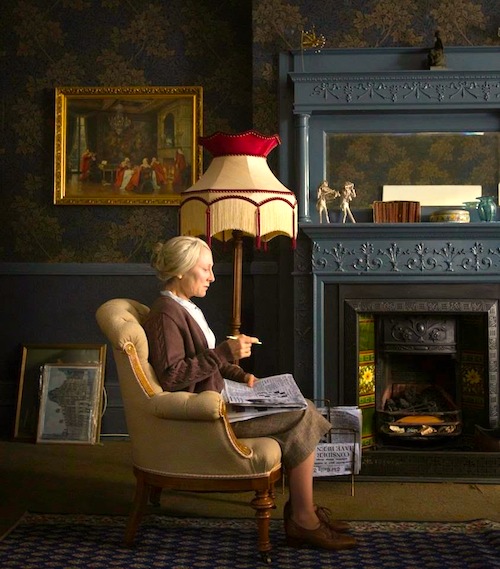
Representing Capote’s gothic impulses (transplanted to the UK), Miriam will come as a bit of a surprise to fans of Breakfast at Tiffany’s (although the novel is considerably darker than the film), but it is not exactly In Cold Blood either. In fact, Hegarty’s screen treatment is particularly effective, because it keeps viewers uncertain whether they are watching an outright horror film or simply a rather dark drama of human frailty.
Karen Lewis (daughter-in-law of the late great Richard Attenborough) is terrific as the increasingly panicked Mrs. Miller, vividly conveying her effort to maintain her proper British composure. Young Annabel Parsons is certainly creepy as her unwelcome guest. In his final screen appearance, Harry Potter alumnus Roger Lloyd Pack is also quite ominous, in a distinguished kind of way, as the mysterious old man.
At about half the length of a Twilight Zone episode, Miriam nicely demonstrates the virtues of ambiguity and Hegarty’s command of mood and atmosphere. It would be a great candidate for one of Shorts Interntional’s theatrical packages. Recommended for fans of short films, Truman Capote, and sinister cinema broadly defined, Miriam screened last Saturday (9/27) and Sunday (9/28) as part of The Twist shorts programming block at this year’s SDFF.
LFM GRADE: B+
Posted on September 30th, 2014 at 10:04pm.
